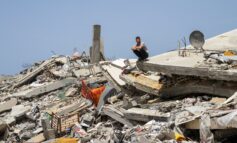
This year, Yemen’s President Ali Abdallah Saleh, 66, celebrates his 30th year in power a record of political longevity beaten among Arab heads of state only by Muammar al-Qadhafi, Libya’s ruler since 1969.
But, whereas Qadhafi’s Libya, flush with oil money, is enjoying an unprecedented boom, Yemen, the Arab world’s poor relation, is battling with wave after wave of violence affecting almost every part of the country, from north to south.
Just last Friday, 18 people, mostly soldiers, were killed and another 45 wounded when a booby-trapped motorcycle exploded as hundreds of Muslim faithful were leaving the Bin Salman mosque, after the Friday prayers, in Saada, northwest Yemen, the main city of a province of some 700,000 inhabitants. Earlier in the same week, seven soldiers were killed and 20 wounded close to the same city, when their convoy was ambushed.

The violence is Yemen seems to have at least three distinct sources:
In the north of the country, Zaidi (Shi’a) rebels in and around Sa’ada are thought to want to overthrow the Shafei (Sunni) dominated government in Sana’a, and restore the Zaidi imamate, overthrown by a republican coup in 1962.
Last June, sporadic fighting, which forced some 50,000 people to flee their homes, was brought to a temporary halt by a cease-fire brokered by Qatar. But neither side has respected the cease-fire terms. Zaidi rebels continue to occupy fortified mountaintop positions, while government forces continue to blockade the province and hold hundreds of rebels captive in jail.
Known as Huthis, the rebels are believed to be led by Abd al-Malik al-Huthi, who took over the leadership of the movement when his brother Hussein Badr al-Din al-Huthi was killed by the army in 2004. The battle against the Huthis is being led by Ali Musin, military commander of the north-western region.
Yemen has also been the scene of attacks by a local jihadist movement, Jund al-Yemen, loosely affiliated to al-Qaeda. Its main targets have been oil pipelines linking Yemen’s small oilfields at Marib, in the east of the country, to Ras Issa on the coast. Since June 2007, there have been three attempts to sabotage the Marib-Ras Issa pipeline, which carries half of Yemens crude exports, and provides much of the government’s income.
There have also been attacks on Westerners in Sana’a and on tourists travelling in the country. In July 2007, a suicide bomber killed eight Spanish tourists and two Yemeni tour guides in Marib, while in January this year two Belgian women were killed when gunmen sprayed a tourist caravan in the Hadramout.
On March 18, the U.S. Embassy in Sana’a was the target of a rocket-propelled grenade attack, while less than a month later, on April 6, another RPG attack was launched against the Hadda Apartment Compound in the diplomatic area of the capital.
The usually well-informed Gulf States Newsletter (published in the UK) reported last month that these attacks were “very worrying developments for the international community” and had led to an outward flow of U.S. diplomatic staff and other foreigners.
A third source of trouble is the endemic tension between North and South Yemen. Although they were united in 1990, they fought a civil war in 1994 which the North won. Since then, the South has complained of northern hegemony, of the theft of land and commercial premises by northerners, of widespread corruption, of brutal army and police tactics, and of the arrest of prominent dissenters. A particular grievance is the inadequate pensions paid to former southern military officers, forcibly discharged following the civil war.
Protests have spread across the country to Aden, Dhali’, Lahij, Abyan, Shabwa and Hadramout organized by former southern officers, but also triggered by the soaring cost of bread, cooking gas cylinders and other necessities.
Renewed in 2006, President Ali Abdallah Saleh’s current term of office runs until 2013. His last years in power are unlikely to be tranquil.
Patrick Seale is a leading British writer on the Middle East, and the author of “The Struggle for Syria”; also, “Asad of Syria: The Struggle for the Middle East”; and “Abu Nidal: A Gun for Hire.’ Copyright © 2008 Patrick Seale





Leave a Reply